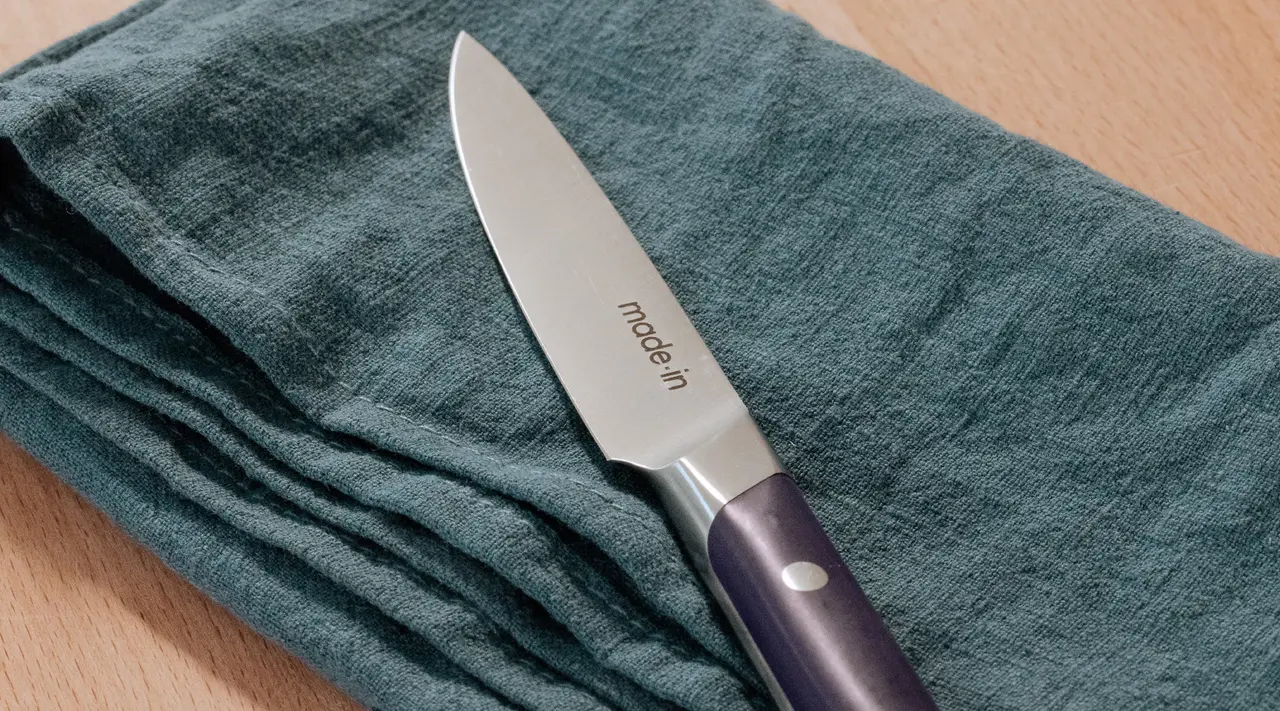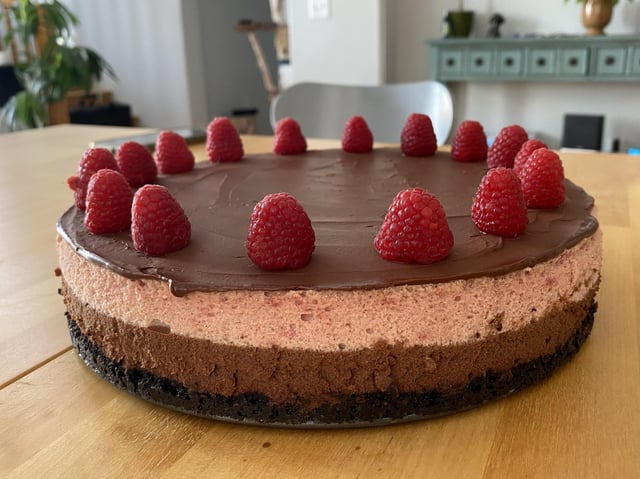What is a Paring Knife Used For? Essential Kitchen Tips
What is a paring knife used for? A paring knife is used for small, precise tasks such as peeling fruits and vegetables, deveining shrimp, trimming fat, and slicing small garnishes. Its short, sharp blade offers excellent control, making it ideal for delicate kitchen work that requires accuracy and detail.
This small but mighty knife is specifically designed to handle the delicate tasks that larger knives can’t. Imagine effortlessly gliding through fruits and vegetables, achieving precision and control that transforms your cooking experience. You might be wondering, “What exactly is a paring knife used for?
” Well, you’re about to discover how this essential kitchen tool can elevate your food preparation skills. Get ready to unlock the secrets of the paring knife and find out why it’s a must-have for anyone who loves to cook.

Credit: infinityknifeco.com
What Is a Paring Knife Used For?
Paring Knife Basics
Understanding the basics of a paring knife is essential for any kitchen enthusiast. This small yet versatile tool is often overlooked. But it plays a crucial role in everyday cooking tasks. With its short blade and pointed tip, the paring knife handles precision tasks with ease.
Understanding The Paring Knife
The paring knife usually measures between 2.5 to 4 inches. Its small size makes it perfect for detailed work. The blade is sharp and slightly curved. This design allows for easy maneuverability.
Common Uses In The Kitchen
A paring knife excels at peeling fruits and vegetables. Its precision lets you remove skins without wasting the flesh. It’s ideal for coring apples or removing seeds from peppers. The knife also works well for deveining shrimp.
Choosing The Right Paring Knife
When selecting a paring knife, consider the handle material. A good grip ensures control. Look for a blade made of stainless steel. It’s durable and resists rust. The weight should feel balanced in your hand.
Maintaining Your Paring Knife
Proper care extends the life of your paring knife. Hand wash it with mild soap. Avoid putting it in the dishwasher. Regularly sharpen the blade. A sharp knife is safer and more effective.

Credit: www.dalstrong.co.uk
Peeling And Trimming
Peeling and trimming are essential tasks in any kitchen. A paring knife makes these tasks easier. Its small size and sharp blade offer precision. This tool is a favorite for delicate work.
Peeling Fruits And Vegetables
A paring knife excels at peeling fruits. It smoothly removes apple skin. It tackles tough orange peels too. Vegetables like carrots are no match. The knife glides easily over them.
Trimming Excess Fat
Trim meat effortlessly with a paring knife. It cuts away excess fat with precision. This is useful for healthier meals. The blade ensures a clean cut. It helps in achieving perfect portions.
Removing Seeds And Cores
A paring knife helps remove seeds. It scoops out apple cores. Bell peppers are easy to handle. The knife gets the job done swiftly. It avoids mess and waste.
Creating Decorative Garnishes
Create beautiful garnishes with ease. A paring knife carves intricate designs. It slices thin cucumber ribbons. Perfect for elegant food presentation.
Precision Cutting Tasks
A paring knife excels in precision cutting tasks. Ideal for peeling fruits and vegetables, it handles delicate jobs effortlessly. Its compact size ensures control for intricate work, making it a kitchen essential.
In the culinary world, precision is key. Whether you’re crafting an elaborate dish or simply preparing a meal for your family, the tools you use can make all the difference. A paring knife is one such tool that excels in tasks requiring accuracy and control. Its small size and sharp blade make it perfect for intricate cutting tasks that larger knives can’t handle.
Peeling Fruits And Vegetables
Peeling might seem straightforward, but it requires finesse to avoid wasting the edible part. A paring knife allows you to glide smoothly over the surface, removing just the skin. Imagine peeling an apple without losing the fruit beneath. That’s the kind of precision a paring knife offers. Have you ever tried peeling a tomato with a regular knife? If so, you’ll know why a paring knife is indispensable.
Removing Seeds And Cores
When you need to remove seeds from a bell pepper or core an apple, a paring knife is your best friend. Its pointed tip allows you to maneuver around seeds and cores with ease. You can quickly scoop out the unwanted parts without damaging the rest of the fruit or vegetable. Next time you’re preparing a salad or fruit platter, reach for your paring knife to make the task simpler and neater.
Trimming And Shaping
A paring knife is perfect for trimming fat from meat or shaping delicate garnishes. Its precision allows for detailed work, such as creating decorative cuts in vegetables for presentation. Have you ever admired a beautifully carved radish or cucumber spiral? A paring knife is the tool behind those artistic touches. It empowers you to elevate your dish from ordinary to extraordinary with just a few careful cuts.
Deveining Shrimp
If you’ve ever deveined shrimp, you know how tedious it can be. A paring knife simplifies this task with its sharp point and small size. You can easily slice along the back of the shrimp and remove the vein without tearing the delicate flesh. This ensures a clean, professional finish that enhances both the appearance and taste of your seafood dishes. Why struggle with a larger knife when a paring knife can do the job effortlessly?
Precision Slicing
When you need paper-thin slices of garlic or shallots, a paring knife is ideal. Its sharpness and control let you achieve consistent, thin slices that enhance the flavor distribution in your dishes. These fine slices cook evenly and add a subtle touch to your meals. Next time you’re preparing a stir-fry or sauce, try using a paring knife to see how it transforms your cooking experience. Precision cutting tasks in the kitchen demand a tool that can handle the job with accuracy and ease. A paring knife is that tool. Its versatility and control make it an essential part of any cook’s arsenal. Are you making the most of your paring knife? Give these tasks a try and discover the difference for yourself.

Credit: www.youtube.com
Maintenance And Care Tips
Proper care extends your paring knife’s life. It keeps the blade sharp and effective. Follow these tips to maintain your knife in top condition. You’ll ensure it stays your trusted kitchen tool.
Proper Cleaning Methods
Wash the paring knife by hand. Use warm water and mild soap. Avoid dishwashers as they can dull the blade. Dry the knife immediately with a soft cloth.
Sharpening Techniques
Keep the blade sharp for optimal performance. Use a sharpening stone or steel. Ensure you maintain the correct angle while sharpening. Regular sharpening prevents dullness.
Storage Solutions
Store the knife in a knife block or on a magnetic strip. This prevents blade damage and keeps it safe. Avoid placing it loose in a drawer.
Preventing Rust
Moisture causes rust on blades. Dry your knife thoroughly after washing. Apply a light coat of oil to the blade. This acts as a protective barrier.
Handling With Care
Handle your paring knife with care. Avoid using it on hard surfaces like metal or stone. Use a wooden or plastic cutting board for best results.
Frequently Asked Questions
What Tasks Can A Paring Knife Handle?
A paring knife is great for peeling, slicing, and trimming fruits and vegetables. Handy for small tasks.
How Is A Paring Knife Different From A Chef’s Knife?
A paring knife is smaller, more precise. Ideal for detailed work. Chef’s knives handle larger, heavier tasks.
Can Paring Knives Cut Meat?
Yes, but only small portions. It’s best for trimming fat and delicate tasks. Use larger knives for bigger cuts.
Conclusion
A paring knife is a handy kitchen tool. It’s perfect for peeling fruits. You can easily slice small vegetables. This knife offers precision in cutting. You won’t struggle with intricate tasks. It’s small but mighty in the kitchen. Many home cooks love its versatility.
It handles delicate tasks with ease. You can quickly prepare garnishes. Its sharp blade ensures clean cuts. It makes food prep efficient and fun. With practice, your skills will improve. Try using a paring knife today. Enjoy the ease it brings to cooking.
Related Article
- Bark River Knife: Precision Craftsmanship Unveiled
- Best Cooking Knife Sets: Discover Topfeel’s Precision and Durability
- Best Fixed Blade Knife for Tactical, Survival, and Everyday Adventures







